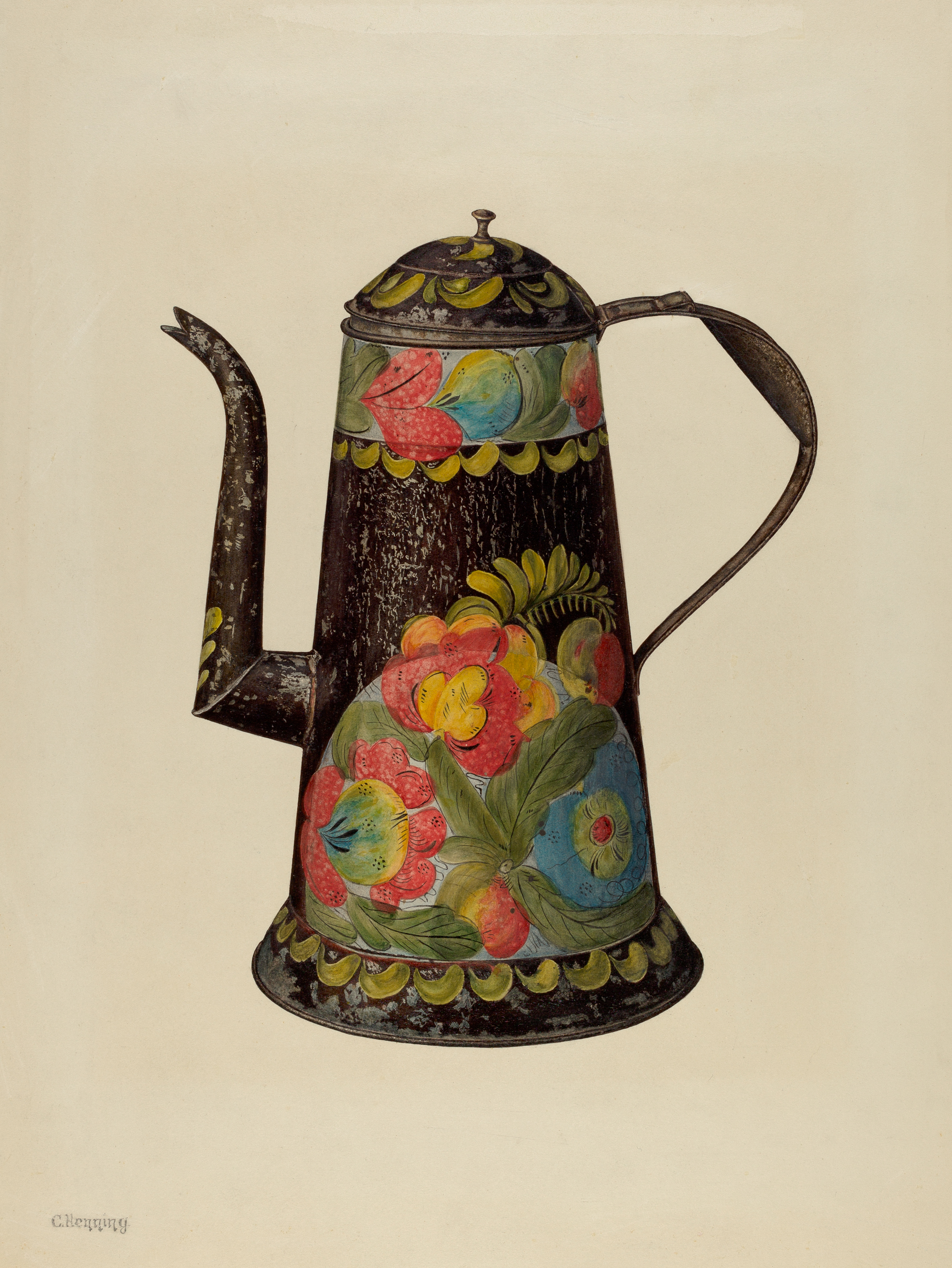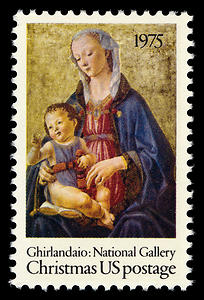|
Toleware
The term ''tôle'', derived from the French '' tôle peinte'', "painted sheet metal", is synonymous in English usage with japanning on tin, such as the tôle shades for bouilotte lamps and other candle shades, and trays and lidded canisters, in which stenciling and gilding often features, almost always on a black ground. Pontypool and Usk in South Wales made a reputation for tôle imitating Japanese lacquer starting in the early 19th century. In American collectibles and antiques, toleware refers to kitchen-related objects created from metal, typically tin or thin steel, and are often in decorative styles such as Arts and Crafts and Pennsylvania Dutch. Decorative painting on these items is common but not necessary. This style of decorative art spread from Europe to the United States in the 18th century, and was popular in US kitchens in the 18th and 19th centuries. In the field of handicrafts, tole painting on metal objects is a popular amateur pastime. Toleware was featured ... [...More Info...] [...Related Items...] OR: [Wikipedia] [Google] [Baidu] |
Tole Painting
Tole painting is the folk art of decorative art, decorative painting on tin and wooden utensils, objects and furniture. Typical metal objects include food utensil, utensils, coffee pots, and similar household items. Wooden objects include tables, chairs, and chests, including hope chests, toyboxes and jewelry boxes. With a longer history in Europe (see toleware), in America the practice began in 18th century New England, and was also extensively carried on among Germans, German immigrants in Pennsylvania. A separate, related tradition occurs in the Netherlands and among Scandinavian countries and immigrants, including Norwegians, Danes and Swedes. German tole painting may concentrate more on metal and tin objects, while Scandinavians and Netherlanders may concentrate more on wooden objects and furniture. Patterns in the two traditions vary slightly as well. Modern tole painting typically uses inexpensive, long-lasting and sturdy acrylic paints. Good quality wooden work is s ... [...More Info...] [...Related Items...] OR: [Wikipedia] [Google] [Baidu] |
Japanning
Japanning is a type of finish that originated as a European imitation of East Asian lacquerwork. It was first used on furniture, but was later much used on small items in metal. The word originated in the 17th century. American work, with the exception of the carriage and early automobile industries, is more often called toleware. It is distinct from true East Asian lacquer, which is made by coating objects with a preparation based on the dried sap of the ''Toxicodendron vernicifluum'' tree, which was not available in Europe. Japanning is most often a heavy black "lacquer", almost like enamel paint. Black is common and japanning is often assumed to be synonymous with black japanning. The European technique uses varnishes that have a resin base, similar to shellac, applied in heat-dried layers which are then polished, to give a smooth glossy finish. It can also come in reds, greens and blues. Originating in India, China and Japan as a decorative coating for pottery, authen ... [...More Info...] [...Related Items...] OR: [Wikipedia] [Google] [Baidu] |
Charles Henning, Toleware Coffee Pot, C
Charles is a masculine given name predominantly found in English and French speaking countries. It is from the French form ''Charles'' of the Proto-Germanic name (in runic alphabet) or ''*karilaz'' (in Latin alphabet), whose meaning was "free man". The Old English descendant of this word was '' Ċearl'' or ''Ċeorl'', as the name of King Cearl of Mercia, that disappeared after the Norman conquest of England. The name was notably borne by Charlemagne (Charles the Great), and was at the time Latinized as ''Karolus'' (as in ''Vita Karoli Magni''), later also as '' Carolus''. Some Germanic languages, for example Dutch and German, have retained the word in two separate senses. In the particular case of Dutch, ''Karel'' refers to the given name, whereas the noun ''kerel'' means "a bloke, fellow, man". Etymology The name's etymology is a Common Germanic noun ''*karilaz'' meaning "free man", which survives in English as churl (< Old English ''ċeorl''), which developed its ... [...More Info...] [...Related Items...] OR: [Wikipedia] [Google] [Baidu] |
Make-up Stamp
Non-denominated postage is postage intended to meet a certain postage rate that retains full validity for that intended postage rate even after the rate is increased. It does not show a monetary value, or denomination, on the face. In many English-speaking countries, it is called ''non-value indicator'' or ''non-value indicated'' (NVI) postage. Introduced to reduce the cost of printing large issues of low-value stamps to "top-up" old issues, NVI stamps are used in many countries. UPU approval The Universal Postal Union approved the use of non-denominated stamps on international mail in 1995. Canada Canada's first non-denominational stamp was the 1981 "A" Definitive, featuring a stylized maple leaf. It was issued during a transition from the first class domestic rate 17¢ to 30¢ and was valued at 30 cents. In 2006, Canada's next NVI was called the "Permanent" stamp, which is a trademarked term. It was originally marked by a white capital "P" overlaid on a red maple leaf, whi ... [...More Info...] [...Related Items...] OR: [Wikipedia] [Google] [Baidu] |
Postage Stamp
A postage stamp is a small piece of paper issued by a post office, postal administration, or other authorized vendors to customers who pay postage (the cost involved in moving, insuring, or registering mail), who then affix the stamp to the face or address-side of any item of mail—an envelope or other postal cover (e.g., packet, box, mailing cylinder)—that they wish to send. The item is then processed by the postal system, where a postmark or cancellation mark—in modern usage indicating date and point of origin of mailing—is applied to the stamp and its left and right sides to prevent its reuse. The item is then delivered to its addressee. Always featuring the name of the issuing nation (with the exception of the United Kingdom), a denomination of its value, and often an illustration of persons, events, institutions, or natural realities that symbolize the nation's traditions and values, every stamp is printed on a piece of usually rectangular, but sometimes triangu ... [...More Info...] [...Related Items...] OR: [Wikipedia] [Google] [Baidu] |
United States Postal Service
The United States Postal Service (USPS), also known as the Post Office, U.S. Mail, or Postal Service, is an Independent agencies of the United States government, independent agency of the executive branch of the Federal government of the United States, United States federal government responsible for providing mail, postal service in the U.S., including its insular areas and Compact of Free Association, associated states. It is one of the few government agencies Postal Clause, explicitly authorized by the U.S. Constitution. The USPS, as of 2021, has 516,636 career employees and 136,531 non-career employees. The USPS traces its roots to 1775 during the Second Continental Congress, when Benjamin Franklin was appointed the first United States Postmaster General, postmaster general; he also served a similar position for the colonies of the Kingdom of Great Britain. The United States Post Office Department, Post Office Department was created in 1792 with the passage of the Postal ... [...More Info...] [...Related Items...] OR: [Wikipedia] [Google] [Baidu] |
Handicrafts
A handicraft, sometimes more precisely expressed as artisanal handicraft or handmade, is any of a wide variety of types of work where useful and decorative objects are made completely by one’s hand or by using only simple, non-automated related tools like scissors, carving implements, or hooks. It is a traditional main sector of craft making and applies to a wide range of creative and design activities that are related to making things with one's hands and skill, including work with textiles, moldable and rigid materials, paper, plant fibers,clay etc. One of the oldest handicraft is Dhokra; this is a sort of metal casting that has been used in India for over 4,000 years and is still used. In Iranian Baluchistan, women still make red ware hand-made pottery with dotted ornaments, much similar to the 5000-year-old pottery tradition of Kalpurgan, an archaeological site near the village. Usually, the term is applied to traditional techniques of creating items (whether for per ... [...More Info...] [...Related Items...] OR: [Wikipedia] [Google] [Baidu] |
Pennsylvania Dutch
The Pennsylvania Dutch ( Pennsylvania Dutch: ), also known as Pennsylvania Germans, are a cultural group formed by German immigrants who settled in Pennsylvania during the 17th, 18th and 19th centuries. They emigrated primarily from German-speaking territories of Europe, mainly from the Palatinate, also from Baden-Württemberg, Hesse, and Rhineland in Germany as well as the Netherlands, Switzerland, and France's Alsace-Lorraine region. Pennsylvania's German settlers described themselves as ''Deutsch'' or ''Hoch Deutsch'', which in contemporary English translated to "Dutch" or "High Dutch" ("Dutch" historically referred to all Germanic dialect speakers in English). They spoke several south German dialects, though Palatine German was the dominant language; their mixing contributed to a hybrid dialect, known as Pennsylvania Dutch, or Pennsylvania German, that has been preserved through the current day. The Pennsylvania Dutch maintained numerous religious affiliations; the ... [...More Info...] [...Related Items...] OR: [Wikipedia] [Google] [Baidu] |
Japanese Lacquer
is a Japanese craft with a wide range of fine and decorative arts, as lacquer has been used in '' urushi-e'', prints, and on a wide variety of objects from Buddha statues to ''bento'' boxes for food. The characteristic of Japanese lacquerware is the diversity of lacquerware using a decoration technique called in which metal powder is sprinkled to attach to lacquer. The invention of various techniques in Japanese history expanded artistic expression, and various tools and works of art such as are highly decorative.Masayuki Murata. ''明治工芸入門'' p.24. Me no Me, 2017 A number of terms are used in Japanese to refer to lacquerware. ''Shikki'' (漆器) means "lacquer ware" in the most literal sense, while ''nurimono'' (塗物) means "coated things", and ''urushi-nuri'' (漆塗) means "lacquer coating." The terms related to lacquer or lacquerware such as "Japanning", "Urushiol" and "''maque''" which means lacquer in Mexican Spanish, are derived from Japanese lacqu ... [...More Info...] [...Related Items...] OR: [Wikipedia] [Google] [Baidu] |
South Wales
South Wales ( cy, De Cymru) is a loosely defined region of Wales bordered by England to the east and mid Wales to the north. Generally considered to include the historic counties of Glamorgan and Monmouthshire, south Wales extends westwards to include Carmarthenshire and Pembrokeshire. In the western extent, from Swansea westwards, local people would probably recognise that they lived in both south Wales and west Wales. The Brecon Beacons National Park covers about a third of south Wales, containing Pen y Fan, the highest British mountain south of Cadair Idris in Snowdonia. A point of some discussion is whether the first element of the name should be capitalised: 'south Wales' or 'South Wales'. As the name is a geographical expression rather than a specific area with well-defined borders, style guides such as those of the BBC and ''The Guardian'' use the form 'south Wales'. In a more authoritative style guide, the Welsh Government, in their international gateway w ... [...More Info...] [...Related Items...] OR: [Wikipedia] [Google] [Baidu] |

.jpg)




